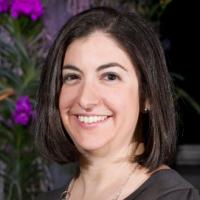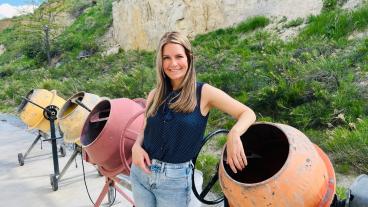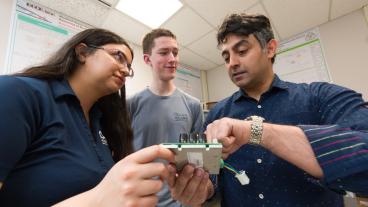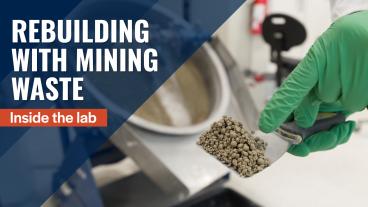Rebuilding after disaster: Mines professor working on low-emissions plan for earthquake-damaged area
Professor H. Sebnem Duzgun is part of a team evaluating efficient and low-emission rebuilding plan for southeastern Türkiye
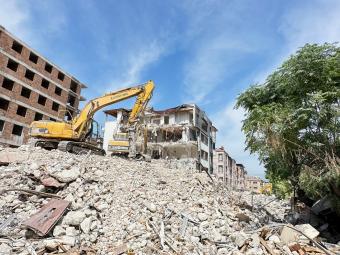
Antakya, in southeastern Türkiye, faces a long clean-up process following a February 2023 earthquake.
PHOTO PROVIDED BY SEBNEM DUZGUN
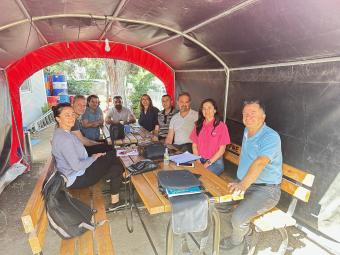
When a natural disaster strikes, the affected area can get a lot of immediate attention. Images of the destruction are shared on social media, and videos of the wreckage play on cable news. But very often, months later, before buildings and infrastructure have been rebuilt, the news cycle has left the disaster behind.
That’s the situation in parts of Türkiye and Syria, where an earthquake struck in February 2023. One of the hardest hit towns in Türkiye was Antakya, and H. Sebnem Duzgun, Fred Banfield Endowed Chair of Mining Engineering at Colorado School of Mines, traveled there four months after the earthquake with a group of other researchers from around the world to help. Duzgun is from Türkiye and earned her bachelor’s, master’s and PhD degrees in mining engineering from Middle East Technical University in Ankara, Türkiye.
Together, the group is working on assessing the earthquake damage and creating rebuilding models that can help guide local stakeholders in the recovery effort.
“This city needs to be planned pretty much from the beginning, because the existing urban environment was not resilient and almost totally destroyed,” Duzgun said. “Antakya is a very old city and has been destroyed by earthquakes since being established centuries ago. The question now is, how can this city be rebuilt to hold its urban population and in a way with minimum emissions?”
As part of the team, which includes colleagues from Türkiye, Delft University of Technology in the Netherlands, ETH Zurich in Switzerland, TED, Hacettepe and Mustafa Kemal Universities in Turkiye, Duzgun is focused on providing recommendations on how to rebuild critical infrastructure with reduced emissions.
Duzgun used satellite images of the damage, combined with visits to the city over the summer to collect data to understand the damage in Antakya and what a rebuilding process would look like. She and her collaborators are creating a comprehensive assessment that takes into account the many considerations involved.
“We have urban planners, geographers, sociologists, computer scientists, engineers, and many more involved in the process,” Duzgun said. “The whole concept of building a new city that’s resilient to earthquakes is a complex problem to solve, with a lot of challenges. My focus on emissions is just one piece of it.”
The piece that contributes the most emissions during rebuilding is actually material production, Duzgun said. The steel, concrete, and other materials needed to rebuild roads and buildings are processes that are intense in greenhouse gas emissions.
“We calculate emissions from iron ore and coal, which can go into steel production. It matters how the steel is produced, the grade of the ore, processing changes and how all these production processes impact emissions,” she said. “Even the location of the mines where the ores come from matters because that might need to be transported from elsewhere and emissions due to ore production and processing depend on energy sources available at the mine site. In this massive production environment, it’s not just the demand on the affected cities, but of the whole world as rebuilding cities increases emissions.”
Duzgun said the entire rebuilding effort in Antakya is estimated to take ten years. The holistic process will need to consider not just the physical rebuilding but also what kind of city best serves its residents. During visits to Antakya, Duzgun and the team interviewed decision makers and local representatives to ask about their perceptions and how they envision a new city.
Antakya, which is situated partially in the area of the ancient city of Antioch, has been inhabited since at least the fourth century BCE. The city’s cultural heritage is a key piece of the assessment. Rebuilding can’t just be a process of how to reconstruct infrastructure but needs to make sure the city is best serving the people who live there, Duzgun said.
“Social preferences are fundamental,” she said. “How do the people here want to live, and how do they define their identity? The history and heritage of the city can’t be ignored.”
And while this specific project is aimed at helping rebuild in Antakya, the same process could be applied to rebuilding after other natural disasters, like the recent wildfires in Hawaii and a hurricane in Florida.
“The scientific community always looks at the resilience, risk, and vulnerability,” Duzgun said. “We had to look at the emissions, as well, and the climate change aspects of the rebuilding because that’s part of the reason we’re seeing so many more natural hazards. We are collaborating on tackling this complex problem, and I think this research will help so many urban renewal efforts.”

